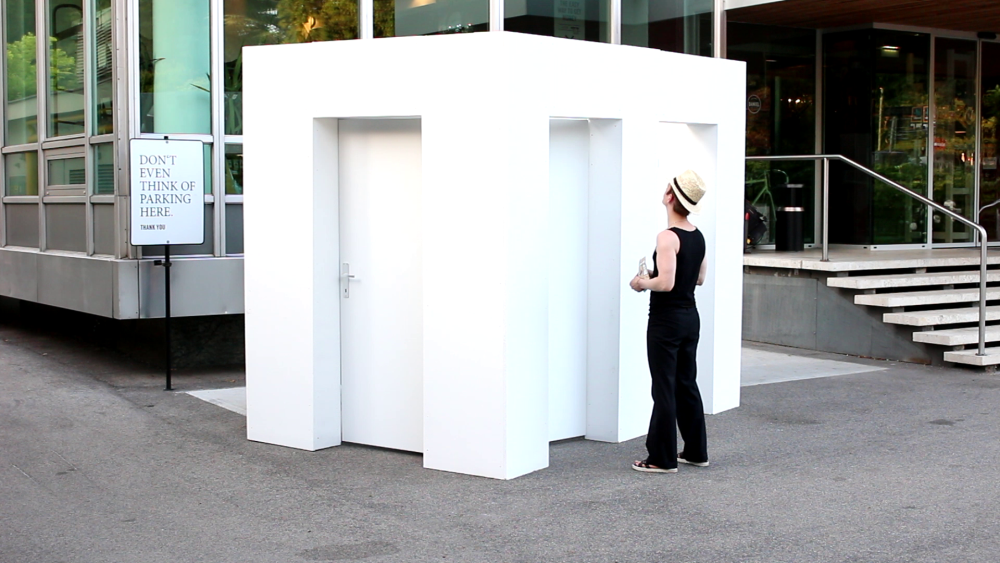
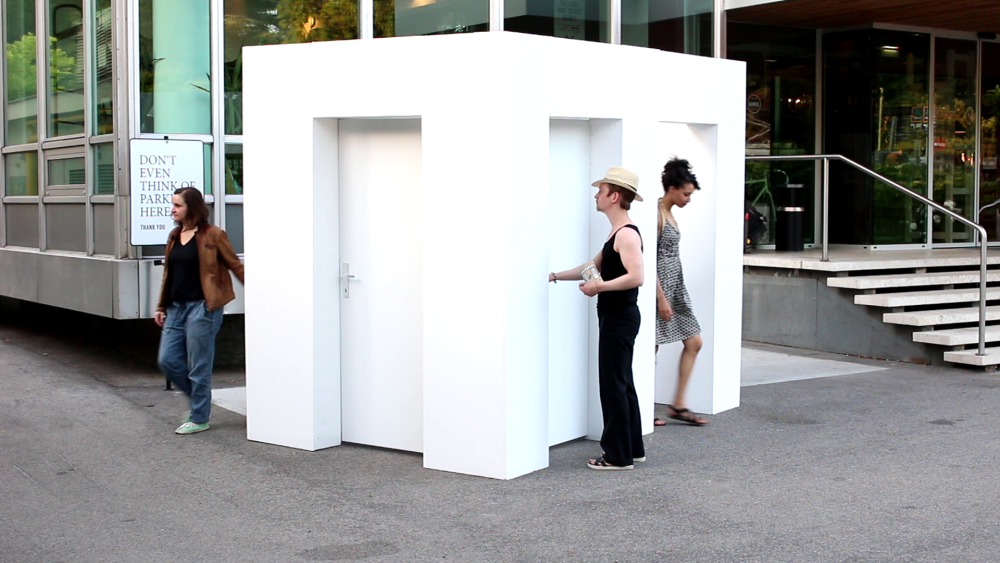
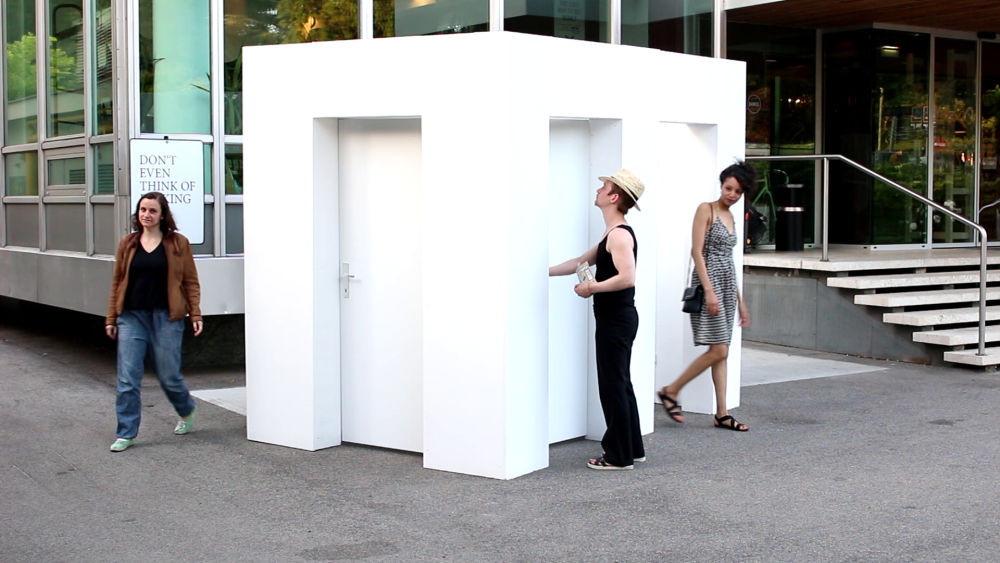
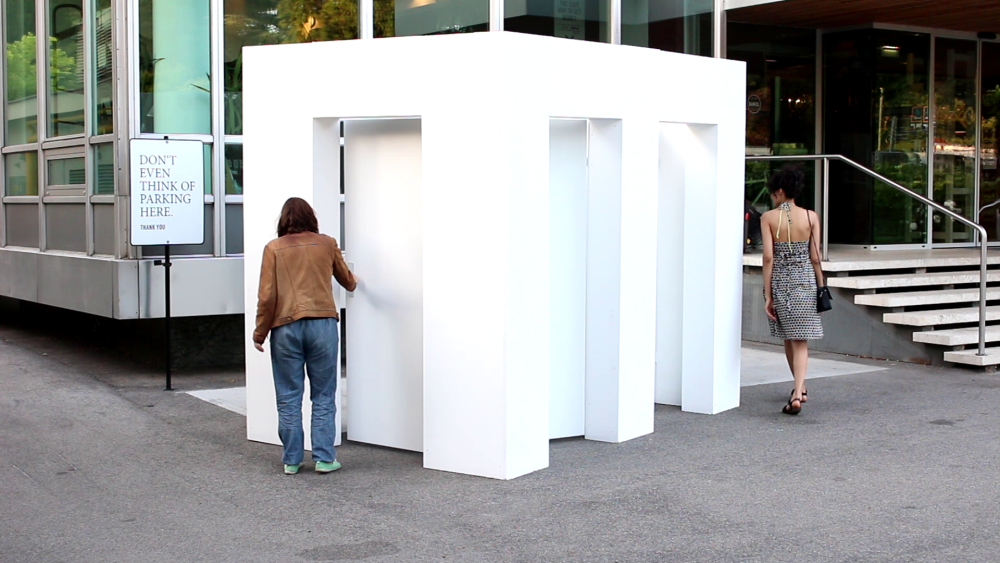
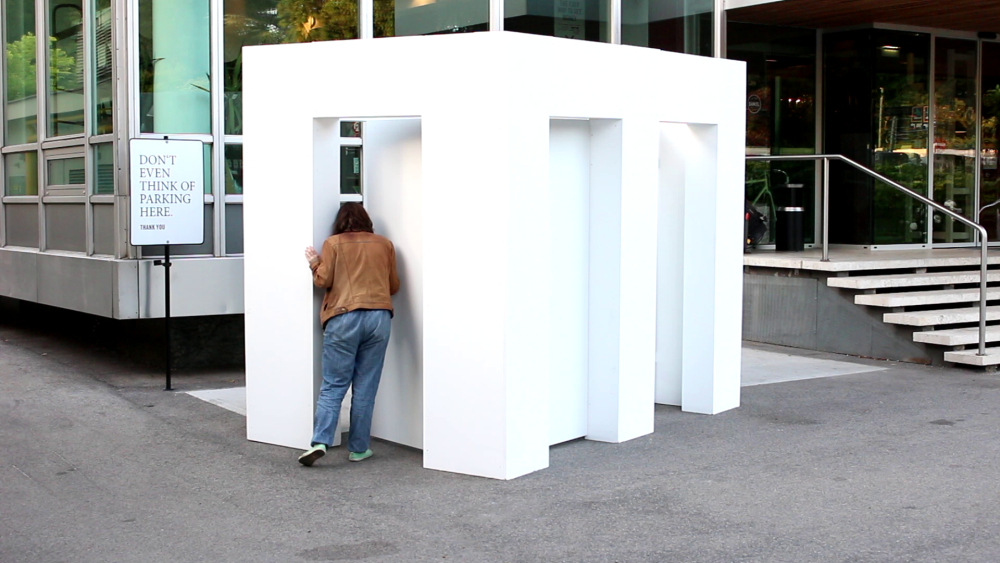
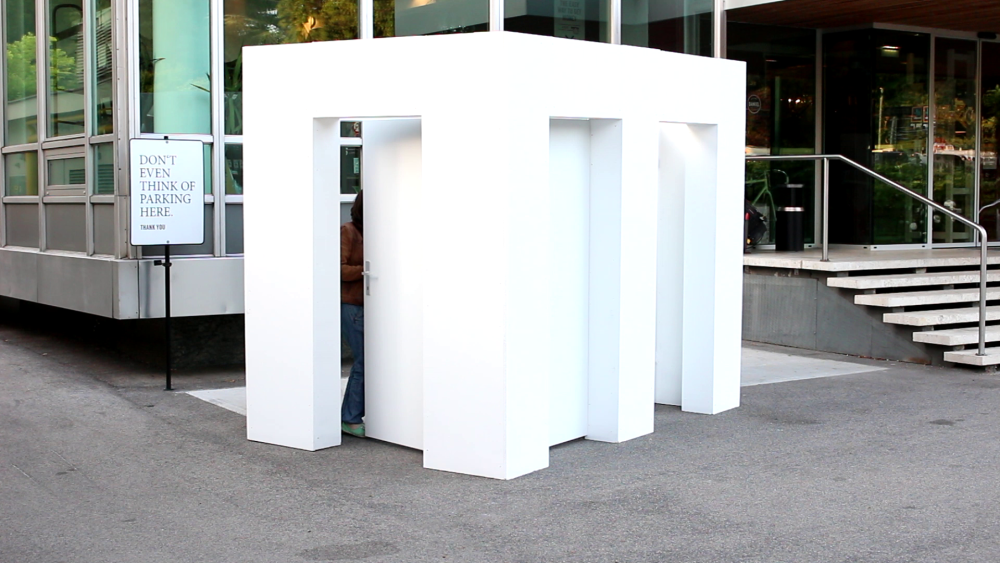
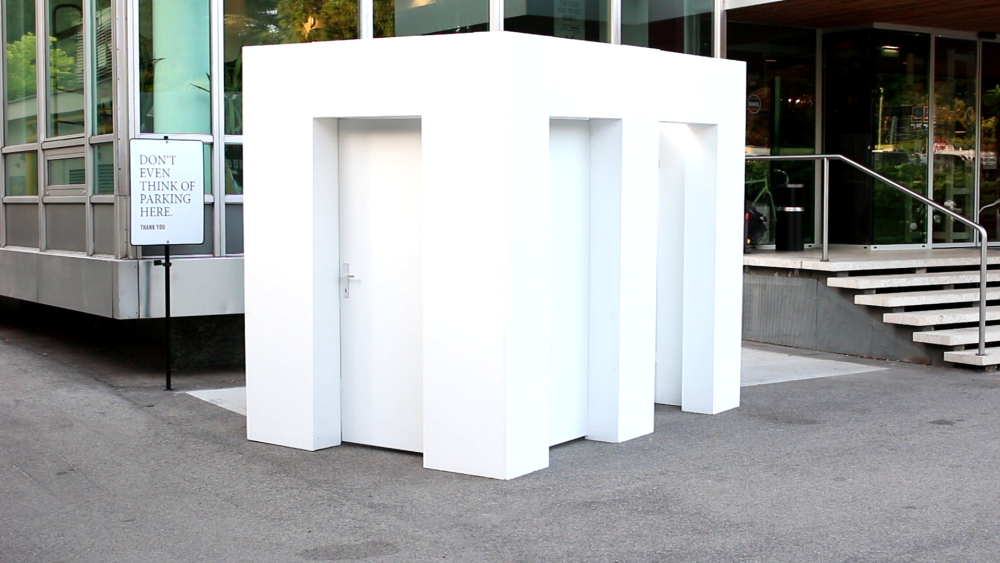
The objects and installations of sculptor and media artist Angelika Wischermann always contain a performative aspect. She is particularly interested in everyday actions – such as opening doors or wiping one’s feet – which she repeats to the point of absurdity. For example, the artist persistently slides back and forth across the seat of a chair with sandpaper attached to her thighs, or she wipes her feet on doormats for hours or even days – leaving bodily traces and imprints, and in doing so, questions our behavioral patterns. She often invites the audience to participate. In 2015, she designed a temporary architectural structure for public space that was not meant as a place to stay but rather as a walk-trough room. “Up until around 1650, floor plans did not clearly separate intimate from communal spaces, and architects followed Alberti’s principle that as many doors as possible should lead from one room to all adjacent rooms. It was only in the 19th century that people began to complain about the 'walk-trough room' – a clear indication that a cultural code distinguishing between private and public had taken shape,” notes cultural theorist Bernhard Siegert. Wischermann’s walk-in installation Durchgangszimmer (walk-trough room), made up of four plain white walls without a roof, indeed has an unusually high number of doors. Each long side has two doors, and each short side has one, all of which open inward. However, since the room is very small, the doors cannot all be opened at the same time without bumping into each other. Multiple users – whether performers or random passersby – end up blocking one another depending on their temperament, politely giving way, firmly pressing door handles, carefully slipping through a narrow gap, or attempting to communicate through knocking and calling. Through this spatial installation, Wischermann prompts spontaneous interaction among people, encouraging them to question their social conventions and enabling a playful, physical-spatial experience.